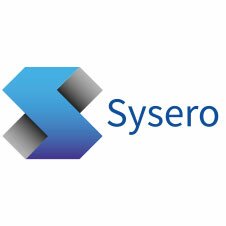Sysero: How to build a thriving legal knowledge library
There’s no shortage of information available within the walls of the modern law firm. However, the true challenge for lawyers is being able to quickly locate the vital piece of know-how that will transform their interaction with a client.
As the keepers of the firm’s collective knowledge, today’s knowledge managers play a crucial role in law firm success. Modern knowledge management has moved beyond just work product retrieval and reuse, with knowledge managers thinking strategically about how to best leverage firm expertise to enable lawyers to quickly and accurately solve client challenges.
This starts with building a trusted knowledge library. The knowledge library is, more often than not, the first step for lawyers looking for know-how, document templates and other matter-related information. However, unorganised, outdated and inaccurate information can quickly derail the effectiveness of a firm’s library. To effectively capitalise on the firm’s collective knowledge, knowledge managers must make it easy for lawyers to quickly surface relevant, high-quality know-how, templates and other documents.
So, how do build a knowledge library that will thrive in today’s always-on firm? Here, we outline some key steps to ensure your firm is taking the right approach to knowledge management.
Take Stock of your Current Knowledge
When undertaking any knowledge management project, it’s important to first understand what know-how is currently in the system. Over the years, know-how will have become outdated, inaccurate, irrelevant or highly duplicated. Review your existing knowledge by performing a knowledge audit, reviewing what you have and what you’re missing.
Redefine your Knowledge
After you’ve revised what you have, you can start to consider how you can more effectively organise your know-how. Lawyers need to be able to quickly uncover relevant information, both by searching and browsing. Consider using practice-based taxonomies to enable lawyers to quickly browse, search and filter by practice categories. To refine search even further, you can assign helpful metadata defined by the firm, such as author, owner, knowledge type, review data, and practices.
For example, Sysero’s knowledge libraries combine profiling processes with flexible full-text search capabilities to bring an Amazon-like search experience to internal know-how.
Rationalise your Knowledge
Knowledge is constantly evolving, so it’s crucial to put into place systems and workflows to monitor new and changing know-how. For example, if a lawyer uses the knowledge library to create a new legal transaction, it will most likely go through several iterations before the final document is archived into the DMS. To keep the knowledge library relevant, it’s important to be able to feed these changes back into the knowledge library, without creating an overabundance of master templates.
An efficient way to manage evolving know-how is to aim to have one master template per transaction, and provide online guidance to lawyers through document automation. As they complete their document online, they can opt to incorporate additional options, such as clauses, schedules or optional text.
Control Knowledge Quality
As new know-how is added to the library, it can be more challenging to control the quality of your firm’s intellectual property. To keep your content relevant, high-quality and accurate, you need to get a few things right:
Keep content updated – Create quality notifications to alert subject matter experts to review and update clauses and templates at regular intervals
Review before accepting – Set up quality workflows to automatically route know-how submissions and edits to designed Knowledge Gatekeepers, who can then review before rejecting or accepting changes.
Review usage – Regularly review which templates and documents lawyers are using, or not using, to ensure only relevant templates are in the system.
When it comes down to it, your law firm’s knowledge library can either be a significant competitive advantage or a drain on internal resources. Building a strong knowledge library requires strategic planning, the right technology system, and a proactive approach. If you’re interested in updating your knowledge library, be sure to check out our Knowledge Base demo for ideas on how you can evolve your approach.



